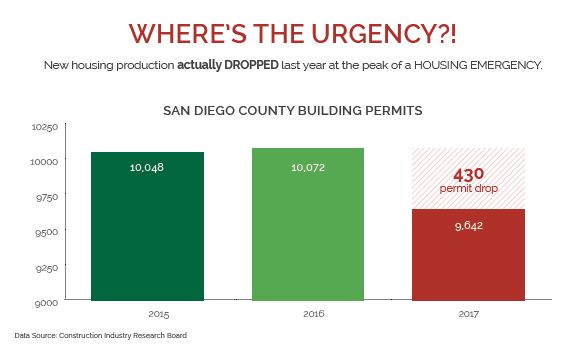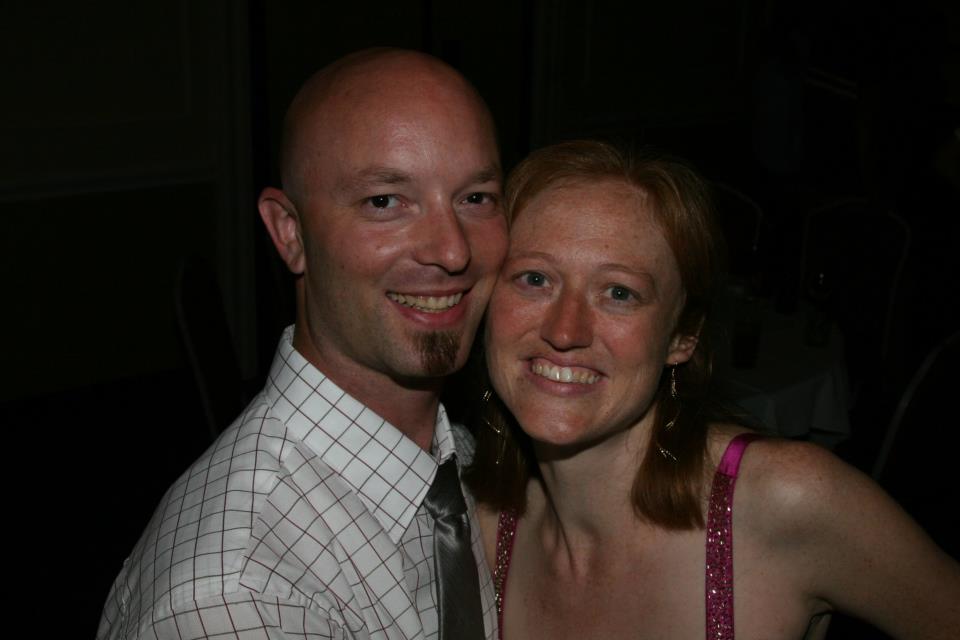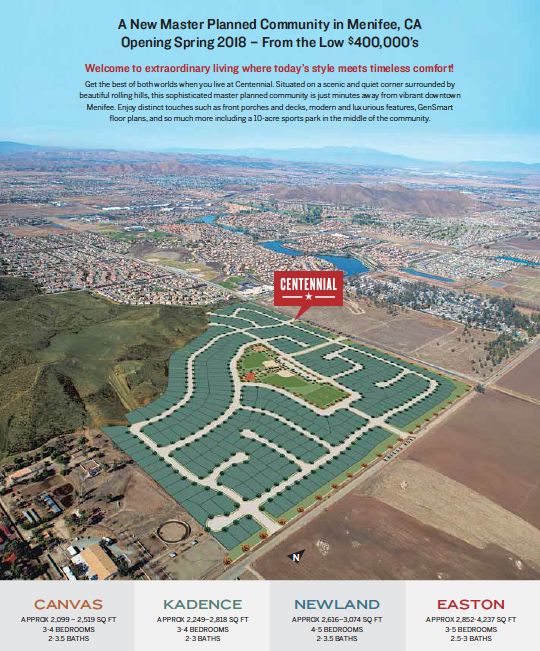As Housing Crisis Deepens, A Next Generation Development Emerges

The new Lilac Hills Ranch is a transformational community that might just move the San Diego region to a new path that embraces growth.
Last year, at the peak of San Diego County’s housing emergency, housing production actually dropped, according to new data. Demand for new housing was at an all-time high and our homeless crisis was making national headlines, but builders were unable to pull permits.
Home prices and rental rates continue to rise and San Diego remains in the midst of a shameful homelessness epidemic. Working families, seniors, college graduates and others have been pushed out because they can’t afford a home. The causes are so well known that by now they’re cliché: It is too difficult, too expensive and too time-consuming to build homes here. For too long, we’ve let the perfect be the enemy of the great, and we’ve let NIMBYs stand in the way of progress.
San Diego will become the next Santa Barbara – meaning only One-Percenters can afford a home here – if we do not collectively adopt a new outlook that embraces growth.
Riverside County Makes Up The Gap
A look at Interstate 15 on any weekday morning shows a significant side effect of our failure to build homes. Cities like Murrietta, Temecula and Menifee in Riverside County have capitalized on our lack of housing and created growing new bedroom communities in a decade or less.
Sixty thousand Riverside County residents drive down I-15 every day to get to work in San Diego County. Many of them drive right past new and proposed developments like the new Lilac Hills Ranch – a village of carbon-neutral homes for working families planned for the I-15/North County Growth Corridor, about 35 minutes from the ocean, near Valley Center.
San Diego County planning officials have designated land along both sides of the I-15 as a North County growth corridor, an area identified as a preferred site for new development and housing. Building new homes near utilities and services, including schools and retail, and alongside other development is a smart growth best practice that eases traffic and helps prevent leapfrog development.
How Our Housing Crisis Impacts Families
The effects of our housing crisis are especially hard on working families.
“After almost a decade as renters in San Diego, my wife and I began looking to purchase a home and quickly realized there were not many attainable options for people like us,” said 40-year-old Brian Johnston, a landscape designer who bought a home in Riverside County two years ago.
Brian Johnston and his wife Julie
With the bulk of his clients still located in San Diego, Johnston regularly commutes between Riverside and San Diego counties.
“Making the commute just one way can take as long as two and a half hours,” he said. “I wish there was a closer option for us. Even without the time commuting, all of the driving back and forth is a huge pollution issue for me as someone who cares about our environment.”
Riverside Targets San Diegans
Riverside County developers are openly targeting San Diegans who can’t afford to buy a home here.
Located in Menifee, the Centennial development is a new master-planned community that placed a full-page color ad in the February 24th edition of the San Diego Union-Tribune.
The ad beckons to where “style meets timeless comfort…from the low $400,00’s.” Compare that price point to San Diego County’s median listing price of $660,000, according to Zillow.
By recent estimates, the shortage of homes in San Diego County is as high as 58,000. State forecasts have estimated an additional 21,000 units a year are needed over the next decade to meet regional housing needs. Less than 50,000 homes have been built in San Diego County during the past 5 years.
The New Lilac Hills Ranch
The new Lilac Hills Ranch would build a variety of home types: 903 single-family homes, 468 age-qualified homes, 211 mixed-use units, 164 townhomes and a 200-bed assisted living facility.
The project’s density offers benefits beyond typical developments.
As laid out in the County General Plan, the new LHR would be the first community to meet the county guidelines for a New Village category, the highest development standard in San Diego County:
"The Village category identifies areas where a higher intensity and a wide range of land uses are established or have been planned. Typically, Village areas function as the center of community planning areas and contain the highest population and development densities. Village areas are typically served by both water and wastewater systems. Ideally, a Village would reflect a development pattern that is characterized as compact, higher density development that is located within walking distance of commercial services, employment centers, civic uses, and transit (when feasible)." ~ San Diego County General Plan Land Use
The community would be anchored by a vibrant town center, meaning homes would be within a 10-minute walk of restaurants, a grocery store, coffee shops and parks and trails. Regional planners have established a preference for projects like this because they get people out of their cars, reduce traffic and air pollution and promote a healthy lifestyle.
With 95% of county-controlled land undevelopable because it is preserved natural space, the I-15/North County Growth Corridor and the planned communities within it are some of the best opportunities planners have to make a meaningful dent in in our housing crisis.
A New Team Leads This Project
Recently introduced for public review, the new Lilac Hills Ranch is one such community. It is a meaningfully different project than all previous versions. It’s being led by a new development team who have adopted all of the county’s recommendations and gone above and beyond those.
“The majority of our homes are projected to be between $300,000 and $600,000 – they’re attainable homes for entry-level buyers and our region’s workforce. The alternative is to build $2 million McMansions on 5-acre lots that only one percent of the population could afford,” said Sam Hartman, VP of Ranch Capital.
The new plan includes a new or expanded fire station, millions of dollars for fire service and equipment, a new K-8 school and road safety improvements at more than two dozen locations in the surrounding area.
Ranch has also incorporated a long list of next-generation environmental features in the new plan. These elements, including solar panels on every home, electric vehicle charging stations in every garage and a community-wide transportation management program would make the new Lilac Hills Ranch the County’s first ever carbon neutral Village, meaning it would offset 100% of its greenhouse gasses.
“There’s no other place like this,” said Jon Rilling, the project manager. “The new Lilac HillsRanch is the first carbon-neutral village and links each home to community amenities, restaurants and parks within a 10-minute walk. This will set a new standard for development and placemaking.”
“This is the kind of project we need to build more of,” said Elizabeth Buenrostro, a Bonsall resident. “Unless more homes get built smarter and faster, our housing crisis will only get worse and my children will not have a future here. These are the kind of benefits we should expect from all new construction. We simply can’t continue on the path we’re on if we’re serious about solving our housing crisis.”
A lifelong San Diegan, Robert Weichelt is a local REALTOR® who has worked in the real estate industry for 32 years.










